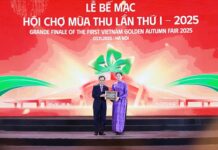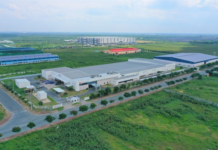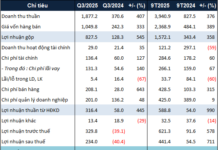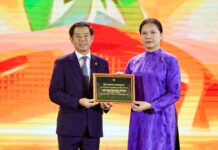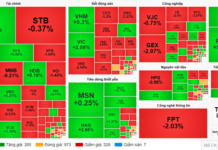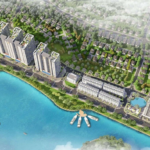Continuing the working program, on the morning of April 22, under the chair of National Assembly Chairman Vuong Dinh Hue , the National Assembly Standing Committee gave its opinions on the “Draft Law on Urban and Rural Planning.”
Eliminate the mindset of terms, “asking – giving”, and “group interests”
Presenting the report, Minister of Construction Nguyen Thanh Nghia said that after 14 years of implementing the Planning Law for urban areas and 9 years of implementing the Construction Law, along with the new requirements of development, limitations and inadequacies have been revealed, requiring research, amendment, supplementation, and improvement.
The Draft Law on Urban and Rural Planning is developed based on the institutionalization of the Party and State’s orientations for perfecting planning policies and laws; harmoniously combining urban development with new rural construction.
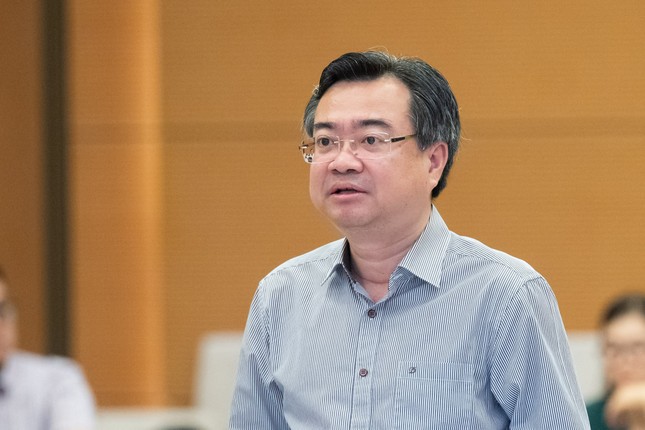
Minister of Construction Nguyen Thanh Nghia.
The draft introduces new points, such as clearly defining the system of urban and rural planning by type and planning level; distinguishing and clarifying the relationship with national planning, regional planning, provincial planning, and specialized technical planning, ensuring consistency and synchronization in planning. At the same time, it simplifies the procedures for preparing, appraising, and approving planning, meeting the requirements for improving the investment and business environment, etc.
Agreeing on the necessity of enacting the law, the representative of the appraisal agency, Chairman of the Economic Committee Vu Hong Thanh , said that merging the regulations on urban planning and rural planning into one law is appropriate, aiming to ensure consistency in the common orientation for control, management, and development.
The appraisal agency also noted the issue of cutting administrative procedures in the work of preparing, appraising, approving, and adjusting planning, meeting the requirements for improving the investment and business environment. It is necessary to resolutely eliminate the mindset of tenure, the mechanism of “asking – giving”, and “group interests” in planning construction, adjustment, and supplementation, leading to the situation of “suspended” projects that are slow to implement in reality.
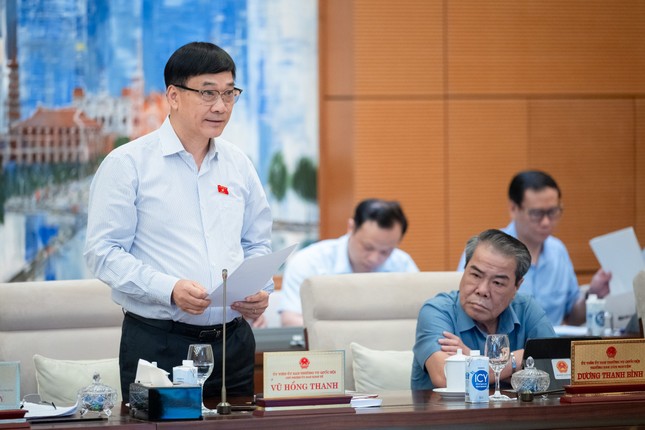
Chairman of the Economic Committee Vu Hong Thanh.
No one prohibits building high-rise buildings in the inner city
Agreeing on the necessity of enacting the law, Secretary-General of the National Assembly Bui Van Cuong agreed with the mobilization of resources to support planning activities; however, this must be done strictly to avoid the risk of using planning support to influence policies and insert group interests and local interests.
Therefore, it is necessary to provide more specific regulations on the public and transparent disclosure of information of organizations and individuals providing support, agencies and units receiving support, and the use of support funds. In this way, if there is any insertion of interests in the future, people will immediately detect it.
Speaking at the meeting, Mr. Le Quang Huy – Chairman of the Science and Technology and Environment (STE) Committee of the National Assembly – referred to the problem of overloading technical infrastructure and social infrastructure in urban areas. “The Law has mentioned this issue. But when I read it, I wondered whether it is necessary to add any regulations to be more specific about this issue or not. Based on that, we will know what overload is,” said Mr. Le Quang Huy.
Speaking at the meeting, National Assembly Chairman Vuong Dinh Hue noted the content related to building height in urban areas. “When we worked with the Ministry of Construction, we realized one thing: building height is due to security and safety issues, not that no one is allowed to build high-rise buildings in the inner city,” said Mr. Vuong Dinh Hue.
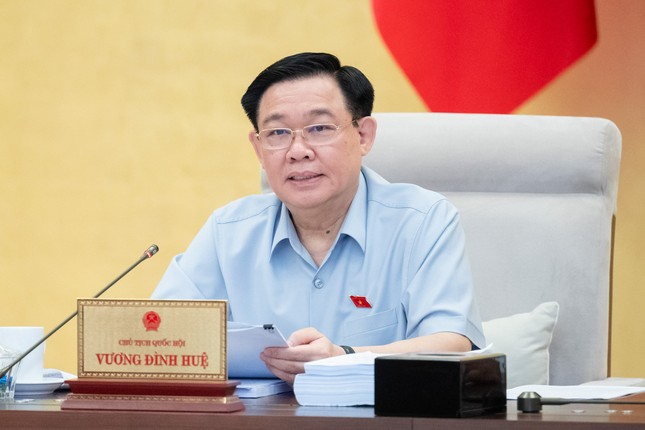
National Assembly Chairman Vuong Dinh Hue speaking at the meeting. Photo: QH.
According to the National Assembly Chairman, the important issue is how to handle the relationships between infrastructure and building height. In fact, the Ministry of Construction does not regulate this height issue either. This is an issue that causes many difficulties in the renovation of old apartments.
Regarding the scope of planning, the National Assembly Chairman gave an example: if Hoan Kiem district (Hanoi) takes the actual scope of planning as only 5 km2. If the criteria and standards on population are applied, many people will have to move out. “But then we changed our thinking, taking the 4 inner-city districts of Hanoi (Hoan Kiem, Dong Da, Hai Ba Trung, Ba Dinh) as a whole for planning and balancing to solve the problem of population and infrastructure,” said the National Assembly Chairman.
Thus, according to Mr. Vuong Dinh Hue, should the standards and criteria on population, density, and building height be left to the planning consultant to propose based on the overall planning, instead of making rigid regulations on this issue? “I think this is a big issue, which also raises many difficulties in practice,” noted the National Assembly Chairman.
Concluding this content, Vice Chairman of the National Assembly Nguyen Duc Hai requested the Government to direct the drafting agency to absorb opinions, complete the dossier, and have the Economic Committee appraise it officially before submitting it to the National Assembly for consideration at the 7th session.






